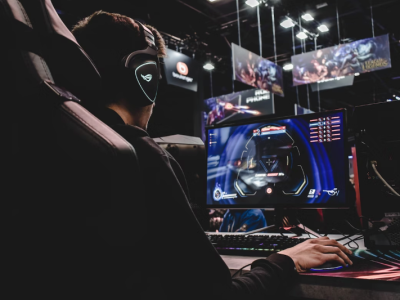The Evolution of Document Recognition: A Comprehensive Overview

Document recognition technology has advanced significantly recently, with MRZ SDK (Machine Readable Zone Software Development Kit) at the forefront of these innovations. MRZ SDK solutions streamline the process of extracting data from identity documents like passports and ID cards by automatically identifying and reading the machine-readable zone (MRZ).
This technology simplifies what was once a cumbersome and time-consuming task, enabling businesses and governments to quickly and accurately verify identities without manual input, making processes such as immigration control, banking, and travel much more efficient.
Evolution of Document Recognition Systems
Optical Character Recognition, or OCR, plays a vital role in information technology. The technology allows businesses to identify characters and images from documents and extract them to create something new.
Nowadays, the pattern and character recognition technology of document recognition systems has become highly advanced and reliable. However, this journey started over a century ago. Therefore, studying this can actually help you to understand the rich history.
Therefore, follow this section to study the evolution of Document Recognition Systems over the course of a century.
1920s-1930s
The OCR technology goes as far back as the times of telegraphy. In fact, the first variant of OCR was created by Emmanuel Goldberg. He created the machine during the height of the First World War.
Goldberg invented this machine to identify transmitted codes and coherently present them. This paved the way for the Analog Reading Machine by Gustav Tauschek. Tauschek’s machine was much more advanced as it read pictures as well.
1950s
Cut to 1950, and we have got our first-ever OCR machine named GISMO. GISMO was the most advanced and actual OCR machine. It paved the way for cuntless iteration that came afterward. This OCR had the power to accurately identify characters.
Therefore, it was a highly advanced piece of machinery. The 50s was the time when the machine was used for commercial purposes. American magazine Reader’s Digest was the first ever organization that managed to commercialize the technology.
1960s-1970s
By the time the 60s came, OCR as a technology became a hot topic for MIT grads. Students established councils to further the OCR as a technology. Their primary aim was to commercialize and bring this technology to the mainstream.
One such group was the Hough’s Transform Technique. The group decided to further the advancement of their new document recognition systems. Their system was capable of recognizing geometric shapes as well. This made the process more fleshed out and more accessible.
1980s-1990s
The 80s and the 90 saw the technological boom. The internet was in its infancy, and computer technology was rapidly evolving. Therefore, this provided the perfect opportunity for document recognition systems to grow.
Reader’s Digest tried commercializing this system back in the 50s. However, OCRs truly became commercial in the 90s. More and more companies have started using the software in their direct payroll. Therefore, the software array is made into a household name.
The Early 2000s
Sadly, the early 2000s was a stagnant period for technology. There were no significant changes to the technology. However, the open-source revival of Tesseract OCR in 2005 started a boom. Soon enough, Tesseract and the creator HP became huge names in the industry.
The Tesseract incorporated several advanced features like machine learning, computer vision, etc.. Thus, this was a vital chapter in the story as it ushered in a new dawn for technology. AI and ML shaped the very essence of this technology to a great extent.
Understanding Present OCR Landscape
OCR makes up the fundamentals of document recognition systems. The process of recording text from scanned images is known as OCR. However, modern document recognition goes far beyond traditional OCR.
Today’s systems can identify a variety of security features embedded in identity documents, such as holograms, watermarks, and UV features, making them more robust and secure. MRZ SDK solutions take advantage of these advanced security techniques.
This allowed for greater precision in reading documents. Even when documents were damaged, data was recorded with a higher level of precision. Therefore, increasing the overall reliability of the software array.
Document recognition systems are becoming more and more compliant with AI and Machine Learning arrays. These technologies help in identifying fraudulent documents by analyzing anomalies in structure, fonts, and patterns, which may be difficult for human eyes to catch.
Why Do You Need It?
The need for secure, fast, and accurate document recognition has grown in tandem with the rise of digital transactions and online services. Whether applying for a loan, creating an online account, or going through customs at an airport, the demand for seamless identity verification is now ubiquitous.
This is where MRZ SDK proves invaluable, offering an API-based solution that can easily be integrated into any document verification workflow. The scope of document recognition systems is gradually growing. It is estimated that the industry will grow by several percent in the upcoming fiscal years.
Beyond its use in business, government governments around the world are also employing document recognition to streamline processes such as border control and visa applications.
The MRZ SDK facilitates this by providing border agencies with a fast and reliable way to process millions of identity documents daily.
As security threats evolve, so too will the technology behind document recognition, ensuring that borders remain secure and immigration processes remain efficient.
Read Also: What Does A Business Development Manager Do?
The Final Thought
Looking ahead, the future of document recognition appears bright. With the integration of blockchain and decentralized identity systems, individuals may soon have more control over their data, storing it in secure, tamper-proof ledgers.
However, until that vision becomes a reality, MRZ SDKs and similar technologies will remain critical in bridging the gap between physical documents and digital identities.
These solutions will continue to play a vital role in helping industries and governments navigate an increasingly interconnected world where identity verification is not just a luxury but a necessity.
Read More:












